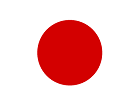Company News
《Back to the List
Silicon Ingot
Growing a silicon ingot can take anywhere from a week to an entire month depending on many factors including size, quality and specifications. More than 75% of all single crystal silicon wafers grow via the Czochralski (CZ) method which uses chunks of virgin polycrystalline silicon. These chunks are melted down and placed in a quartz crucible along with small quantities of elements called dopants, the most common of which are boron, phosphorus, arsenic and antimony. The added dopants give the desired electrical properties for the grown ingot and depending on which dopant is used, the ingot becomes a P or N type ingot (boron: P type; phosphorus, antimony, arsenic: N type).
The materials are then heated to a temperature above the melting point of silicon, around 1420 degrees Celsius. Once the polycrystalline silicon and dopant combination have been liquefied, a single silicon crystal, the seed, is positioned on top of the melt, barely touching the surface. The seed has the same crystal orientation required in the finished ingot. To achieve doping uniformity, the seed and the crucible of molten silicon are rotated in opposite directions. Once conditions for the crystal growth have been met, the seed crystal is slowly lifted out of the melt. Growth begins with a rapid pulling of the seed crystal in order to minimize the number of crystal defects within the ingot at the beginning of the growing process. The pull speed is then reduced to allow the diameter of the crystal to grow to slightly larger than the final desired diameter. When the target diameter is obtained, the growth conditions are stabilized to maintain the diameter. As the seed is slowly raised above the melt, the surface tension between the seed and the melt causes a thin film of the silicon to adhere to the seed and then to cool. While cooling, the atoms in the melted silicon orient themselves to the crystal structure of the seed.
Once the ingot is fully-grown, it is ground to a rough size diameter a little larger than the desired diameter of the finished silicon wafer. The ingot is then given a notch or flat to indicate its orientation, depending on the wafer diameter, customer specifications, or SEMI Standards. Once it has passed a number of inspections, the ingot is sliced into wafers.
 简体中文
简体中文 English
English Español
Español Français
Français Deutsch
Deutsch 日本語
日本語 한국어
한국어 Pусский
Pусский اللغة العربية
اللغة العربية
.png)